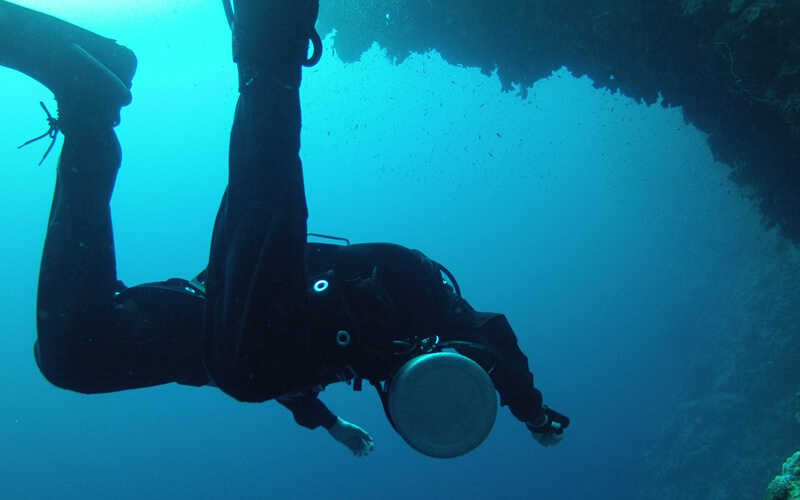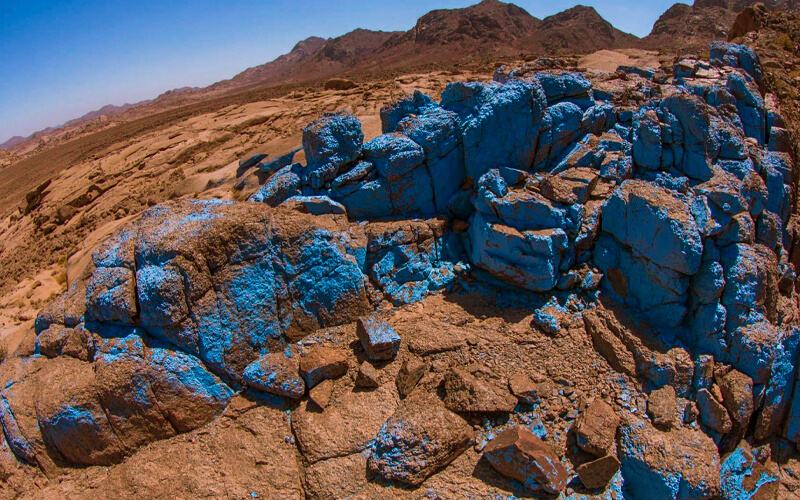Blue Hole in Dahab
Blue Hole in Dahab
– In what part of the world is the Blue Hole?
– The Fatalities Associated with Blue Hole Diving
– The Death of Yuri Lipski (in Russian)
– The Legend of Diver’s Cemetery in the Blue Hole, and how it came to be.
There are several diving locations in the Red Marine for divers who come to Egypt from all over the globe to enjoy the wealth of sea life that can be found nowhere else on the planet. Experienced divers looking for one of the finest diving experiences of their life go to Dahab to dive the Blue Hole, Egypt’s most renowned diving location, which is located on the Red Sea coast.
It is considered a submarine sinkhole, with a maximum depth of over 100 meters, and is not recommended for novices. Divers should have the greatest levels of confidence and diving expertise to dive the Blue Hole safely. Those who dared to dive and explore this incredible diving site will undoubtedly have had the diving experience of a lifetime, and those who did but did not survive will undoubtedly have died doing what they loved the most at what is considered to be the world’s most dangerous diving location.
What is the location of the Blue Hole?
It is situated on the Red Sea coast of Egypt’s the Sinai Peninsula, a few kilometers north of Dahab, on the Sinai Peninsula’s Red Sea coast. The Blue Hole is a popular destination for expert divers as well as inquisitive visitors from all over the globe.
At first glance, the blue hole has a depth of 6 meters, and this first section is referred to as “The Saddle.” This is followed by a tunnel 26 meters long, which is referred to as the “Arch,” with a roof that rises to 55 meters in height and a bottom that reaches the seaward side of the hole, reaching approximately 120 meters. The depth of the water on the seaward side ranges from 1000 meters to 3000 meters.
The Blue Hole, which is famous for freediving because of its easy access straight from the beach and the absence of current, is also recognized for having the greatest number of diving deaths in the world, with an estimated 130 to 200 divers having died there in recent years. It is unclear why the Blue Hole is considered to be the most hazardous diving location on the planet, but one thing is certain: it is not a place for beginners to learn to dive.
Fatalities Associated with Blue Hole Diving
Even if the number of divers who have died while diving in the Blue Hole is simply an estimate, any diver who is contemplating diving in the Blue Hole should bear in mind that this location is not regarded as the most dangerous diving area in the world without good reason.
It is believed that over 130 individuals have died in the Blue Hole in the previous 15 years, from 1997 to 2012. This is an average of 8 fatalities per year throughout the period 1997 to 2012. Blue Hole fatalities have occurred in persons who were snorkeling at the location, even though it is considered a difficult diving experience. The reason for their deaths is now unknown.
The divers who lost their lives at the blue hole were believed to be highly skilled technical divers, with several of them also holding diving instructor certifications. The Egyptian Chamber For Diving & Water Sports has now stationed a police officer at the Blue Hole facilities to guarantee that divers are accompanied by a trained guide and that all safety protocols are followed by the divers.
Yuri Lipski’s Death was a tragic event.
On April 28, 2000, Yuri Lipski, a 22-year-old Russian-Israeli diver, died in the Blue Hole, becoming one of the most well-known diving deaths in the world. It is well known that Yuri’s death was captured on video by the camera he had with him while diving and that the clip was found after his death, making it widely known among the diving community throughout the globe.
The film depicts Yuri on an uncontrollable and uncontrolled plunge to the bottom of the cavern, which is 115 meters below the surface. Yuri can be seen in the video withdrawing his regulator while attempting to fill his buoyancy, but he is unable to ascend. Because he was most likely under the influence of nitrogen narcosis, his judgment was affected, causing him to panic and become confused.
In response to a plea from Lipski’s mother, Tarek Omar, one of the world’s most accomplished deep-water divers, found his remains the next day. A statement from Tarek Omar on his unsuccessful efforts to warn Yuri Lipski about the hazards of this dive. The camera that Yuri had used to film his dive was discovered on the ocean floor, and to Omar’s surprise, the footage containing Yuri’s dying moments had not been damaged. As a result, Yuri’s dying moments were made available to divers all over the world on YouTube, making it one of the most well-known diving deaths in history.
Diver’s Cemetery near the Blue Hole has a fascinating history.
Families and friends of divers who have lost their lives at the blue hole have placed plaques on the adjacent rocks to commemorate their loved ones’ deaths. The plaques were placed there by the divers’ families and friends. The region is currently known as a divers graveyard, which is reserved for people whose corpses were never discovered after their deaths.
During one of our Egypt trips, you will get the opportunity to dive at Egypt’s most notorious diving site.
If you want to spend a fantastic vacation check out our amazing Egypt Vacation packages or Nile cruises to find the best way to travel to Egypt for you.



